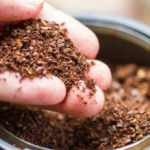The Blue_Star_Fern (Phlebodium aureum) is a fascinating houseplant known for its unique blue-green leaves and fuzzy roots. Unlike traditional ferns, it’s relatively easy to care for, making it a perfect addition to any indoor plant collection. Whether you’re a beginner or an experienced plant parent, understanding Blue Star Fern care is essential for keeping this plant healthy and vibrant.
In this comprehensive guide, we’ll cover Blue_Star_Fern care, propagation methods, and its safety for pets, ensuring you have all the information needed to cultivate this stunning fern.
Blue Star Fern Care: How to Keep It Thriving

1. Light Requirements
The Blue_Star_Fern plant thrives in indirect light. It prefers bright to medium light but can tolerate lower light conditions. However, avoid direct sunlight, as it can scorch the delicate leaves.
Best Placement:
- Near an east-facing or north-facing window
- In a well-lit bathroom (for added humidity)
- Away from direct exposure to afternoon sun
2. Watering Needs
Watering is crucial for Blue Star Fern care. These ferns prefer consistently moist soil, but overwatering can lead to root rot.
Watering Tips:
- Water when the top 1-2 inches of soil feel dry
- Use filtered or rainwater to avoid harmful chemicals
- Mist the leaves occasionally to boost humidity
3. Soil and Potting Mix
A well-draining potting mix is essential for a healthy Blue_Star_Fern_plant.
Best Soil Mix:
- Peat-based potting mix
- A blend of orchid bark, perlite, and coco coir
- Avoid heavy clay-based soils that retain excess moisture
4. Humidity and Temperature Needs
The Blue_Star_Fern thrives in a high-humidity environment, similar to its native tropical habitat.
Humidity Tips:
- Maintain 50-70% humidity
- Use a humidifier or place a water tray near the plant
- Avoid placing the fern near heating vents or dry air sources
Ideal Temperature:
- Prefers 60-75°F (15-24°C)
- Avoid sudden temperature changes
5. Fertilizing Your Blue Star Fern
Fertilizing helps maintain vibrant foliage.
Best Fertilizer:
- Use a diluted liquid fertilizer once a month during spring and summer.
- Avoid high-nitrogen fertilizers, which can damage the roots.
6. Pruning and Maintenance
Pruning is beneficial for removing dead or yellowing fronds. It also encourages new growth, making your plant look fresh and healthy.
Pruning Tips:
- Always use clean scissors to trim damaged leaves.
- Focus on cutting dead fronds at the base, ensuring you don’t harm healthy stems.
Blue Star Fern Bio Table
| Feature | Details |
|---|---|
| Scientific Name | Phlebodium aureum |
| Common Name | Blue Star Fern |
| Plant Type | Fern |
| Native Region | Tropical and subtropical regions of the Americas |
| Light Requirements | Indirect, bright to medium light |
| Watering Needs | Keep soil consistently moist but not soggy |
| Soil Type | Well-draining, rich organic soil |
| Humidity Level | High humidity preferred |
| Growth Rate | Moderate |
| Toxicity | Non-toxic to cats and dogs |
Blue Star Fern Fuzzy Roots: Why Do They Look Like That?
One of the most intriguing features of the Blue_Star_Fern is its fuzzy roots. These roots, known as rhizomes, help the plant absorb moisture and nutrients efficiently.
Care for Fuzzy Roots:
- Avoid burying them completely in soil
- Keep them slightly exposed for better air circulation
- Mist occasionally to prevent drying out
Blue Star Fern Propagation: How to Grow More Plants

Propagation is an excellent way to expand your plant collection or share with friends. The best method for Blue Star Fern propagation is division.
Steps for Propagation:
- Carefully remove the plant from its pot.
- Gently separate the rhizomes into smaller sections.
- Replant each section in a well-draining potting mix.
- Keep the soil moist and provide indirect light.
- Avoid disturbing the newly planted sections for a few weeks.
Propagation is best done in spring or early summer, when the plant is actively growing.
Is Blue Star Fern Toxic to Cats?
Many plant owners worry about whether their houseplants are pet-safe. Good news! The Blue_Star_Fern is non-toxic to cats and dogs, making it a great choice for pet-friendly homes.
Common Problems and Solutions
Even with the best care, Blue_Star_Fern_plants can face a few common issues:
| Problem | Cause | Solution |
| Yellowing leaves | Overwatering | Reduce watering frequency, check soil moisture |
| Brown leaf tips | Low humidity or underwatering | Increase humidity, mist plant regularly |
| Droopy leaves | Underwatering or sudden temperature changes | Water thoroughly and maintain stable temperatures |
| Moldy soil | Poor air circulation or excessive moisture | Improve drainage and allow soil to dry slightly |
All in all, by following these care and propagation tips, you’ll enjoy the beauty of the Blue Star Fern in your indoor space. Happy planting!
Conclusion
To sum up, the Blue_Star_Fern is a stunning and low-maintenance houseplant, perfect for plant lovers of all experience levels. Not only does it require adequate watering, humidity, and light, but it also thrives with minimal effort. Furthermore, its fuzzy roots and pet-safe nature make it a unique and worry-free choice for your home.
All in all, by following these care and propagation tips, you’ll enjoy the beauty of the Blue_Star_Fern in your indoor space. Happy planting!
FAQs
1. How often should I water my Blue Star Fern?
To begin with, you should water when the top 1-2 inches of soil feel dry, which is typically every 7-10 days.
2. Can Blue Star Fern grow in low light?
Without a doubt, it can survive in low light, but it prefers bright, indirect light for optimal growth.
3. Why does my Blue Star Fern have brown tips?
Most importantly, brown tips usually indicate low humidity or inconsistent watering. So, increasing humidity and ensuring even watering will help.
4. How do I propagate a Blue Star Fern?
Basically, you should divide the rhizomes and replant them in fresh soil for successful propagation.
5. Is the Blue Star Fern safe for pets?
Yes! In fact, it is non-toxic to cats and dogs, making it a great choice for pet owners.






